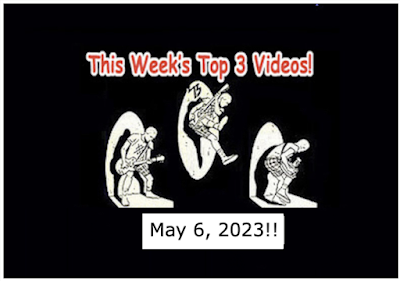In the old days (1908 ~ the 1930s)、during the heyday of Silent Films, there was no such thing as subtitling of movies in countries like Japan (that loved western culture).
Also, as in the west, pianists or string quartets would accompany the Silent Films (Until the music started recording those soundtracks in 1923). So, how did, say, Charles Chaplin or Rudolph Valentino, become worldwide stars when people couldn't understand the silent movies? Or the cards that were inserted into the films to explain situation or dialogue?
There's no way the average Japanese could read this back then...
Heck, it would be troublesome today!... Wait a sec... You guys all read English...
Imagine if the cards said this:
Get it? They could be on the screen for 2 minutes and it wouldn't matter! Chuckle!
Outside of English speaking countries, the films were narrated and explained by what is called, "rhetorician." The Merriam Webster dictionary defines, "rhetorician," as a: "master or teacher of rhetoric; an orator." Or "an eloquent or grandiloquent writer or speaker."
In Japan, these orators were called, "Benshi."
Benshi (stage left)
The Benshi would stand on the stage to the side of the screen and explain the situations in the movies and even add in character dialogue...
Some of these benshi were incredible at what they did; many became superstars in their own right. In fact, these benshi were responsible for people like Chaplin or Valentino becoming famous in Japan. Many fans came to see the Benshi, not so much to see the Hollywood stars! Chaplin or Valentino or the rest were the side acts... Many people came to be entertained by the oratory of the legendary Benshi...
For many people in Japan, it was the Benshi, not the Hollywood stars in the movie that was the main reason for attending the theaters back in old Japan in those days.
I believe, as far as cinema and the mass media, the rhetoricians, the Benshi, were the very first in the evolution of today's voice actors.
Thirty years ago, in Tokyo's Asakusa district, there was a theater called, "Kaminari Theater" (Lightning Theater) and they used to have performances just as they were held during of the heyday of silent films: They would have evenings set up to recreate the exact experience and event of Benshi and Silent Films from the 1920s.
In the old days, in Japan, going to the cinema and seeing a Benshi was a premium experience for the high-class; people would have dinner and champagne or sake while watching the Silent Films.
I went often to those recreations in the 1980s.
Kaminari Theater used to show these Silent Films with quartet & Benshi. When the films were over, I was so impressed, moved and inspired, I had tears in my eyes.
Benshi: Sawato Midori
If this is difficult for you to comprehend, about the Benshi, here's an example: It might be difficult to understand because it's in Japanese, but watch this lady, Sawato Midori, she is awesome. At the very start, she does the voices, of the daughter, mother, sister; then she goes on to do the voices of the samurai men who are fighting... And then flawlessly back to the narrator.
Here is Sawato Midori who is probably Japan's top Benshi.... Even today! She's an incredible talent, : https://youtu.be/nAdtP6Y01bs?t
I met some executives at a silent movie company in Tokyo the other day and am attempting to arrange a showing of, perhaps, a Chaplin movie (and an old samurai movie) with a string quartet accompaniment and a Benshi for our Mt. Fuji - Atami Film & VR Festival and other Japan film festivals planned.
The events will be promoted just like the above explanation. They will be promoted as something like, "A time trip back to Japan of the 1920s."
The shows might include a dinner (like the food they ate back in those days) and drinks.. Drinks from the 1920s: Salty Dog, champagne, rice wine.
After everyone is served, the main event starts: A Harold Lloyd, Chaplin or Samurai Silent film with quartet and Benshi...
Everyone can experience the past and even foreigners will like it as the Samurai movies even have English subtitles in most cases movies and the Chaplin films have the dialogue and situation card inserted.
I think this would be the most fantastic theatrical experience!
Time trip back to the days of the Silent Movie stars, dinner, the show featuring a string quartet and the Benshi!
A once in a lifetime trip to a better time and an age long gone by.
Form more information about the Mt. Fuji - Atami Film Festival see: http://atamifilmfestival.org/
-------------
For more information about Mt. Fuji Atami Film & VR Festival
Please, come and "Follow" our Twitter page: https://twitter.com/FujiAtamiFilm
And, we have a Facebook page too! https://www.facebook.com/MFAFFcinema/
--------------------------------
This post is dedicated to Stephen David Brooks, Koji Kamibayashi, Sawato Midori, My wife, Candice Anne Marshall, Scott Hillier, Giedre Bumbulyte and Elliot Grove.










2 comments:
This might help explain some of the success of the movie, Deadpool. The protagonist is a combination of comedian, action hero, commentator, narrator, and guide for the audience. In many ways, he parodies the super-hero/Marvel genre while at the same time embracing the fun parts of the genre. Part Mel Brooks, part Benshi.
(Of course Deadpool can not compete with the skills of a top Benshi.)
How bloody interesting! Thanks for the information, Mike! Benshi... never knew that stuff.
Post a Comment